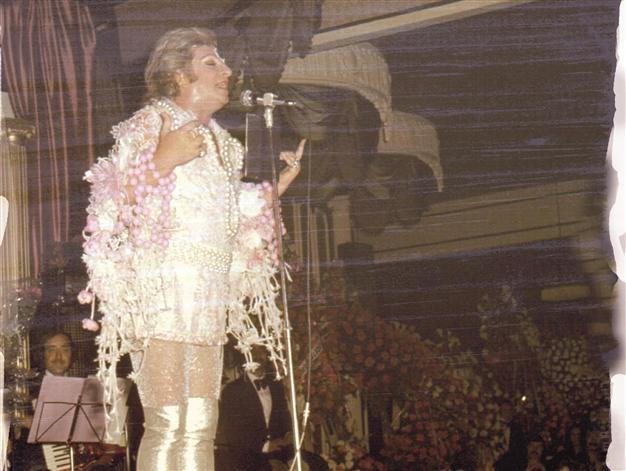Remembering the ‘Sun of Art’
EMRAH GÜLER ANKARA - Hürriyet Daily News

Müren’s flamboyant clothes, his heavy makeup, his coquettish dances, gestures and well-delivered speeches on TV all helped to build a unique image. Hürriyet photo
It’s been 16 years today since Zeki Müren, Turkey’s “Sun of Art” and the “Paşa of pop culture,” died in İzmir at the TRT studios, the very institution that had kick-started his musical career half a century earlier.
Müren might just be the most interesting figure modern Turkey has seen in its short history. He was a singer, a songwriter, a composer, a published poet, a performer, an actor, a designer and an illustrator. He was also a visionary, an innovator and a revolutionary. Whatever Müren was, he sure was always larger than the sum of his parts.
Müren’s career in music began in 1951, when he recorded his first album and began performing on the state radio station Istanbul Radyosu. In 1955, he became the first Turkish singer to win a Gold Disc for a record that included the famous song “Manolya.” Having been chosen as Artist of the Year for many years, Müren made over 200 records and composed over 100 songs in the 45 years of his artistic career. His acting career began around the same time, with his debut feature of 1953, “Beklenen Şarkı” (Anticipated Song), starring opposite the legendary actress Cahide Sonku, becoming an instant success, and opening the way for a movie career of 18 films, Müren writing the score for some of them as well.
A unique brand of campIn 1960, he took the stage in the Turkish version of Robert Anderson’s stage play “Tea and Sympathy.” In addition to his musical and acting careers, Müren was also a gifted poet. He published his poems in 1965 under the name “Bıldırcın Yağmuru” (The Quail Rain), designing the book cover himself.
What had turned Müren into a powerhouse name in pop culture was the combination of enormous
talent spread over many areas with an unapologetically garish public image. His name, soon, came to be associated with his unique brand of camp, an effeminacy which far exceeded that of all the other artists in Turkey – male or female.
His theatrical and flashy stage shows in his early career were always unique and revolutionary. Müren even affectionately gave names to his stage clothes, like Moon Prince or Hero’s Dream. He was the first man to wear a skirt on stage more than 20 years ago, dismissing the innuendos to femininity as he compared his style to that of ancient Rome.
Müren’s flamboyant clothes, his heavy makeup, his coquettish dances, gestures and well-delivered speeches on TV all helped to build a unique image that penetrated our collective memory. When Müren was on TV in the 1970s, and later with the color broadcast in the 1980s, everyone watched him in silence and awe. The New Year’s programs on TRT, when it was Turkey’s only TV station, always showed a Zeki Müren concert when the clock struck midnight. It was a once-a-year experience to see the self-designed new clothes and the jewelry of the Sun of Art.
A career in full circle
His homosexuality was obvious but never made explicit. The rumors of Müren’s clan of young boys in Bodrum, as well as the obscene, homoerotic jokes he apparently shared at informal gatherings, slowly more underground persona. In interviews, Müren said that he had only loved once – an affair which lasted for eight years – carefully refraining from making known the sex of the person, and adding that the relationship was purely platonic with no sexual encounter passing between the two. For years, he secluded himself in his house in Bodrum, which he didn’t leave for a long time, only to reappear in a documentary about him prepared by TRT. This exile led to much speculation about the state of his health. The place and timing of his death were very meaningful, his heart attack striking him at a TRT studio in İzmir.

